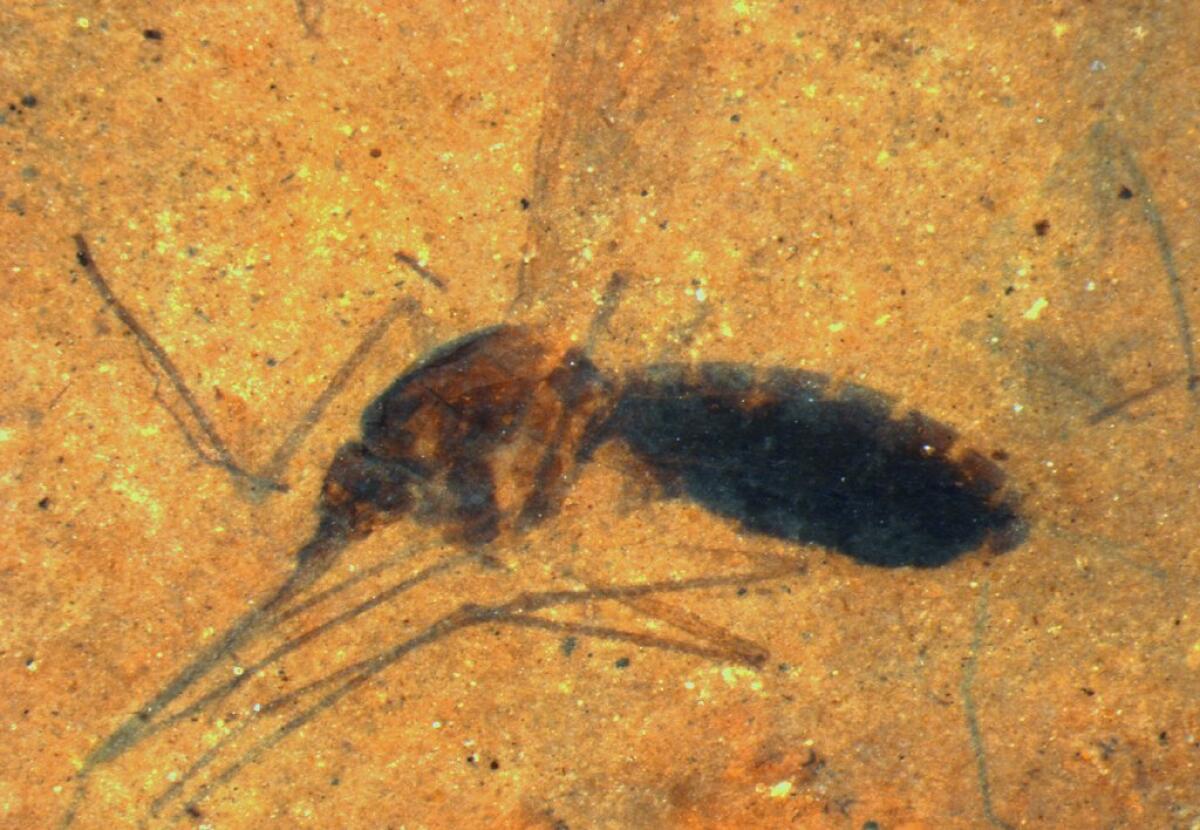Last blood meal found in belly of 46-million-year-old mosquito fossil

Scientists have discovered the last blood meal of a 46 million-year-old female mosquito, and isolated a little fragment of the protein in it, too.
The findings, published this week in the journal Proceedings of the National Academy of Sciences, show that even if DNA can’t survive tens of millions of years — sorry, “Jurassic Park” fans — other biomolecules might.
Even though there are around 14,000 species of blood-feeding insects in existence today, and a whole lot of extinct ones too, it’s incredibly difficult to find specimens in the fossil record, scientists said. In fact, even with all those blood-feeders, only four insect fossils in which signs of blood feeding — disease-causing bugs like trypanosomes and plasmodium — have been discovered.
Most of the blood-sucking bugs found as fossils are biting midges, not mosquitoes. There are about 200 described species of extinct midges and midgelike flies, but only 25 species of fossil mosquitoes. So this fossil of a female mosquito from Montana, called USNM 559050, still gorged from its last meal, was a lucky find, the researchers said.
“The preservation of fossil female mosquito USNM 559050 was an extremely improbable event,” the authors wrote. “The insect had to take a blood meal, be blown to the water’s surface, and sink to the bottom of a pond or similar lacrustine structure to be quickly embedded in fine anearobic sediment, all without disruption of its fragile distended blood filled abdomen.”
In the 1993 film “Jurassic Park,” researchers managed to clone dinosaurs out of blood stored in the belly of a mosquito. But as recent studies have shown, the half-life of the fragile DNA molecule is far too short to survive many tens of millions of years, long enough to give researchers a dino-DNA sample.
But researchers from the National Museum of Natural History in Washington D.C., and the Natural History Museum in London wondered if they could still find signs of hemoglobin, the iron-rich, oxygen-transporting protein in blood, or other biological molecules still intact in this long-stored sample.
Peering inside the mosquito’s belly, they found very high levels of iron. Using a secondary ion mass spectrometer, they pulled out porphyrin molecules, found in heme, the deep red, oxygen-carrying part of the hemoglobin protein.
“These data confirm the existence of taphonomic conditions conducive to the preservation of biomolecules through deep time and support previous reports of the existence of heme-derive porphyrins in terrestrial fossils,” the authors wrote.




